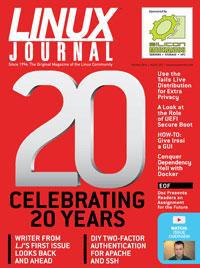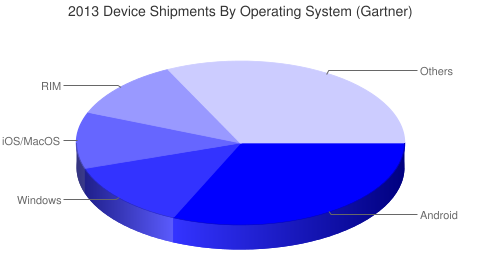How Are the Operating Systems of Today Doing by These Standards?
Windows has had the largest financial investment in it, by far, over the past 20 years. For the last decade, Microsoft has had thousands of employees working on Windows at any given moment. Executives are obsessed to distraction with avoiding the innovator’s dilemma. Many investments are “big bets” that aim to anticipate customer and partner demand, rather than smaller steps to respond to it. Often priorities are focused on internal goals and “better together” initiatives that attempt to extend lock-in or push the user base the latest version. When those initiatives are aligned with the interests of users and partners, they tend to succeed. But many have not.
Among the unheralded successes has been the Windows Update mechanism. For users, it appears that they plug any new or old device into their Windows PC, and it just works — no digging for disks for downloads. In fact, it’s a smart cloud-based system that was implemented before the cloud was a buzzword. When a new device is plugged in, Windows automatically reads the plug and play IDs, checks its servers on the web, and downloads and installs the best available driver automatically. More than 10 years on, Linux and Mac OS X have nothing equivalent.
On the downside, the Windows 8 transition has been particularly jarring. Microsoft faced a tough choice: lose market share in the new tablet space, or create a version of Windows and an ecosystem of applications that supports tablets well. They chose to sacrifice usability as a desktop system to win new tablet users. The result is a confusing collision of two UI worlds. Some users have gone scrambling to find an alternative, driving up sales of Chromebooks and perhaps hastening the tablet shift.
Meanwhile, the Windows 8 App Store had a new API and no provision to run those apps on Windows 7 or earlier. This created another catch-22 for winning over application developers. It sped up the unravelling of the valuable application lock-in that Microsoft had established starting with Windows 3.1. A commercial application developer a decade ago would have been crazy not to design for Windows. Today, that same developer is crazy not look first at designing for a hosted HTML, CSS, and Javascript model that would allow the application to work on any platform. That should be ringing alarm bells in Redmond, given the market share of other Microsoft platforms that weren’t able to leverage the lock-in of Windows binaries (Windows CE, Zune, Windows Phone, etc.)
Security-wise, it’s important to understand that Windows 7 and 8 have perhaps the best line-of-code level security of any existing OS. Microsoft invests enormous efforts to identify and fix potential exploits before shipment. But the weekly “patch Tuesday” flood highlights how difficult it is to protect a big, juicy target like Windows. It’s the potato blight of our era. We’ll talk about Linux security later, but what protects Linux is less the quality of its code, and more the diversity of it.
After one and a half years, Windows 8 has only crossed 10 percent market share. But Microsoft still has a chance to regain its footing, given the combined market shares of XP, 7, and 8.




Loading Comments